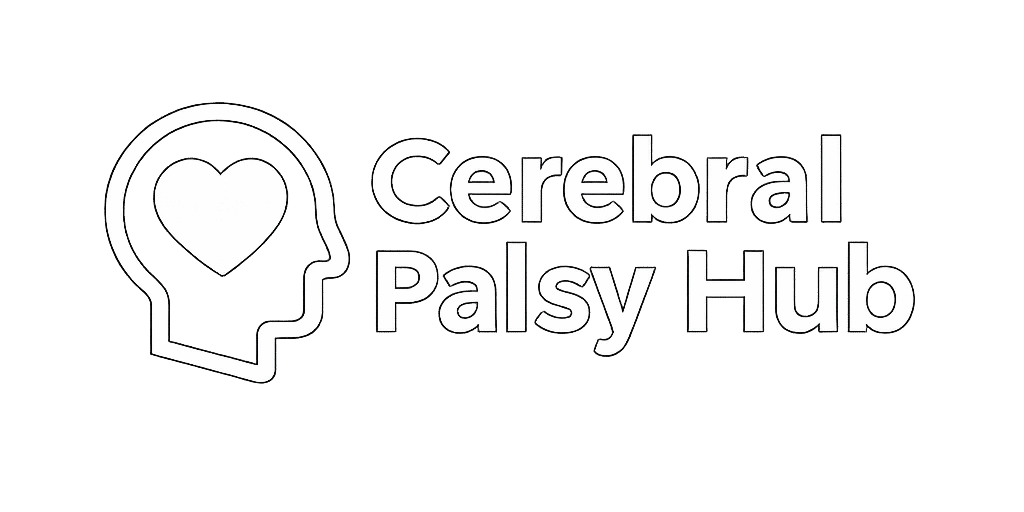Cerebral Palsy Treatment
Cerebral palsy (CP) treatment aims to improve movement, communication, comfort, and independence through individualized care that may include medical treatment, therapy, assistive devices, and support from a multidisciplinary team. Below is an overview of the key treatment categories parents should know.
What Is Cerebral Palsy Treatment?
Depending on the type of cerebral palsy a child has, treatment can involve different kinds of therapies, medical care, and supports that help a child with CP live their life as fully and independently as possible.
The right treatment plan usually combines multiple approaches that address movement, communication, learning, and overall health. Because cerebral palsy affects each child differently, treatment plans are highly personalized and may change as your child grows.
These plans often combine physical therapies, medications, assistive devices, and sometimes surgery, along with emotional and educational support. The ultimate goal is to improve your child’s comfort, abilities, and confidence so they can participate in school, home life, and play.
What to Know Before Treatment
Before starting or adjusting treatment, there are several key factors parents should consider to make sure the approach is right for their child. This includes understanding your child’s current abilities, challenges, and how different treatments might fit into their daily life.
It’s also important to consider the timing of therapies, as starting certain interventions earlier can lead to better long-term results. Cost, accessibility, and how comfortable your child is with the treatment style all play a role in deciding the best path forward.
Communication between you and your child’s care team is essential to ensure every decision supports your child’s needs and goals. Here are some common considerations parents weigh:
-
Your child’s age and stage of development
-
Severity and type of CP symptoms
-
The potential benefits versus risks of each treatment
-
Practical factors like schedule, travel, and cost
-
How treatments fit with school and family routines
Professional Cerebral Palsy Specialists
Treating cerebral palsy usually requires a team of professionals who each bring a different area of expertise. This can include medical doctors, therapists, educators, and support coordinators who work together to create a comprehensive plan.
Pediatric neurologists often lead the medical side, diagnosing CP and managing conditions like seizures, while orthopedic surgeons may address bone and joint issues.
Therapists such as physical, occupational, and speech therapists can play a hands-on role in helping your child build skills and independence. Special education teachers and psychologists ensure your child’s learning and emotional needs are met.
Depending on your child’s needs, your team may also include:
-
Pediatric neurologist
-
Orthopedic surgeon
-
Physical, occupational, and speech therapists
-
Special education teachers and learning specialists
-
Psychologists or behavioral therapists
-
Dietitians and feeding specialists
How Long Does Treatment Last?
Treatment for cerebral palsy is typically a long-term, ongoing process rather than something with a set end date. Because cerebral palsy is a lifelong condition, the type and intensity of therapy often change as a child grows and their needs evolve with time.
Some interventions like physical or occupational therapy, may be intensive in early years but may become less involved during adolescence or adulthood. Others, such as medication adjustments or orthopedic surgeries, may be needed at specific times depending on changes in symptoms or mobility.
While many families expect treatment to taper off, it’s common for care to remain a consistent part of life, especially when managing spasticity, preventing complications, and maintaining mobility. The exact duration of treatment will always depend on the individual’s goals, response to interventions, and any associated health conditions.
Physical Therapy
Physical therapy is often the foundation of CP treatment, helping to strengthen muscles, improve posture, and enhance mobility. Sessions can include stretching, resistance exercises, and guided activities to improve balance and coordination. PT also teaches proper positioning to prevent contractures and deformities.
Common PT techniques include:
-
Stretching and range-of-motion exercises to maintain flexibility
-
Gait training to improve walking patterns
-
Balance and posture exercises to enhance stability
Occupational Therapy
Occupational therapy focuses on fine motor skills and daily living abilities such as dressing, feeding, and writing. It often uses adaptive tools to help the child become more independent in self-care tasks. OT also supports sensory processing challenges, making activities more manageable and comfortable.
Speech and Language Therapy
Speech therapy addresses communication difficulties caused by muscle weakness, coordination issues, or developmental delays. It may involve articulation practice, breath control exercises, and language development activities. For children with severe speech limitations, therapists can introduce augmentative and alternative communication (AAC) devices.
Quick Fact: For many families, the cost of ongoing therapy, devices, and medical care can become overwhelming. In cases where cerebral palsy may have been caused by preventable medical errors or malpractice, pursuing legal action can help secure funds to cover treatment expenses.
Medications for Spasticity and Muscle Control
Medications can help manage muscle stiffness, involuntary movements, and discomfort, making therapy and daily life easier. The choice depends on the severity and type of muscle issues.
Common options include:
-
Oral medications such as baclofen or diazepam for overall muscle relaxation
-
Botulinum toxin (Botox) injections for targeted spasticity control
-
Intrathecal baclofen pumps for continuous delivery in severe cases
Seizure Management
Seizures are common in some individuals with CP, particularly those with more severe brain injury. Management usually involves anticonvulsant medications to prevent or reduce seizure activity. Regular monitoring is essential to ensure effectiveness and minimize side effects.
Orthopedic Surgery
Orthopedic procedures are used to correct bone and joint problems, improve limb function, and reduce pain. Common surgeries include tendon lengthening, hip stabilization, and spinal corrections. Post-surgery rehabilitation is essential for maintaining results and improving function.
Neurosurgical Interventions
Neurosurgical options target the nerve pathways that contribute to spasticity. These treatments are usually considered for severe cases where other methods are insufficient.
The two most common are:
-
Selective Dorsal Rhizotomy (SDR) – removes targeted nerve fibers to reduce spasticity
-
Intrathecal Baclofen Pump Surgery – delivers medication directly into spinal fluid for continuous control
Orthotics and Braces
Orthotic devices, such as ankle-foot orthoses (AFOs), help improve alignment, reduce pain, and enhance walking ability. They can prevent muscle contractures and provide stability for better posture. Orthotics are often custom-made to fit the child’s specific needs and growth.
Mobility Aids & Assistive Devices
Mobility aids allow children to move more independently at home, school, and in the community. The choice of device depends on the child’s physical abilities and goals.
Examples include:
-
Walkers and crutches for partial weight-bearing mobility
-
Manual or powered wheelchairs for longer distances or full support
-
Standing frames to promote bone health and muscle strength
Cerebral Palsy Co-Occurring Conditions Treatment
Many children with CP have other related health issues that also require management. Treating these conditions can greatly improve overall well-being and quality of life.
Vision Problems
Vision challenges like strabismus or cortical visual impairment can affect learning and movement safety. Treatment may include corrective lenses, eye patching, or surgery to improve alignment and function. Early intervention helps prevent worsening vision problems.
Hearing Loss or Auditory Processing Issues
Hearing issues can impact speech development and communication skills. Interventions may include hearing aids, cochlear implants, or specialized listening therapy. Routine hearing checks are important for detecting changes early.
Intellectual and Learning Disabilities
Specialized educational support can help children reach their learning potential. This may involve individualized teaching strategies, assistive technology, and structured learning environments. Early diagnosis allows for tailored interventions.
Behavioral or Emotional Disorders
Some children may experience anxiety, depression, or other behavioral challenges. Therapy, counseling, and structured routines can help manage these concerns. Family support is often a key part of successful treatment.
Gastrointestinal Issues
Problems like acid reflux or constipation can affect nutrition and comfort. Treatments may include dietary changes, medications, or feeding therapy. Addressing these issues can improve growth and daily well-being.
Sleep Disorders
Sleep problems can increase fatigue and impact daily function. Management may involve sleep hygiene strategies, treating underlying medical causes, or using medication when necessary. A consistent bedtime routine can also help regulate rest and ensure better quality of sleep.
Respiratory Issues and Aspiration Prevention
Weak respiratory muscles and swallowing difficulties can increase the risk of pneumonia or aspiration. Treatment may include breathing exercises, suction equipment, or surgery in severe cases. Speech therapy can help improve safe swallowing.
Chronic Pain Management
Pain can result from muscle tightness, joint strain, or secondary complications. Pain management may involve physical therapy, medications, or adaptive equipment. Addressing pain early helps maintain mobility and activity levels.
Quick Fact: Cerebral palsy is often diagnosed with co-occurring disorders that may need attention. Below are some other areas of support that may be needed alongside typical treatments and therapies.
Other Cerebral Palsy Treatments
These supportive approaches help address additional needs and enhance overall treatment outcomes.
Feeding and Nutritional Support
Nutritional guidance ensures children get the right calories and nutrients for growth. This may include modified textures, supplements, or feeding tubes when needed. Dietitians often work alongside therapists for best results.
Adaptive Technology for Communication
Speech-generating devices, communication apps, and specialized keyboards can improve independence for children with speech difficulties. These tools allow children to participate more fully in social and academic life.
Alternative and Complementary Therapies
Options like aquatic therapy, hippotherapy, or music therapy can support physical, emotional, and sensory development. These therapies work best as part of a broader care plan rather than a sole treatment.
Behavioral and Psychological Support
Mental health support helps children cope with frustration, build self-esteem, and develop social skills. Counseling can also guide families in managing stress.
Educational Support and Special Education Services
Individualized Education Programs (IEPs) and classroom accommodations ensure that learning needs are met. Therapies provided within the school setting can reinforce medical and home interventions.
Family and Caregiver Training
Educating caregivers on safe handling, stretching, and positioning improves daily care. Support groups can also provide emotional encouragement and practical advice.
Costs of Treatment for Cerebral Palsy
Getting access to the right treatments for cerebral palsy can be life-changing, but the costs of ongoing therapy, equipment, and medical care can quickly add up. In some cases, cerebral palsy may be linked to medical negligence or malpractice during pregnancy, birth, or early infancy.
In these cases your family could be entitled to financial compensation to help cover treatment expenses. Reaching out to a cerebral palsy lawyer can help your family discover legal options to help secure funds needed to cover treatment costs.
Cerebral Palsy Treatment FAQs
 Written and Medically Reviewed by:
Written and Medically Reviewed by:
Cerebral Palsy Hub Team
Cerebral Palsy Hub was founded to help support children and their families with cerebral palsy and to create a safe space for those affected. We strive to provide the most accurate, up-to-date information, and tools to help give your child the life they deserve.
Last Updated: October 18, 2025
